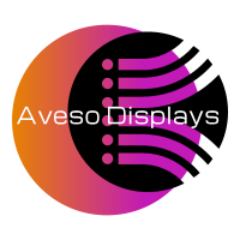Latest From The Blog
Print media: resources, advantages and examples
The media are any form of written or pictorial communication, produced mechanically or electronically by means of printing, photocopying or digital methods, from which several copies can be made by automated processes.
More specifically, they are any form of communication “ink and paper”, which is not written or typed by hand, including books, circulars, magazines, lithographs, memos, magazines, newspapers, leaflets, periodicals and other forms of printed material.
The sector is also nominated for printing and distribution of media through publications, such as magazines and newspapers.
They are one of the oldest and most basic forms of communication in existence. Before the invention and wide use of printers, printed materials had to be written by hand. The contribution of these media in providing information and transferring knowledge is remarkable. Even after the advent of electronic media, print media has not lost its charm or relevance.
Features
The main use of print media is to disseminate information about events and news, as it is the fastest way to reach the public. In addition, they offer a lot of entertainment to readers. Although the expansion of digital media has affected the use of printing, it is still a viable way to advertise.
Mass circulation
Newspapers are the most common print medium. Delivered at home or sold at a newsstand, newspapers can be published daily, weekly or monthly.
The newspaper has the advantage of providing fast, economical and tangible delivery of news and advertising. You cannot trim a pizza coupon in a radio ad. On the other hand, magazines periodically deliver what the newspaper cannot: coverage and in-depth analysis of specific events, not just the news of the day. For these print media, information is the way to attract readers and potential customers.
Delivery
The print media must be placed in the hands of the customer, who is the person who reads the material and responds to the ads. In most areas, newspapers are delivered at home.
Another method is to deliver by mail. In fact, the mass delivery of newspapers, magazines, leaflets and newsletters represents one of the most important sources of revenue for the postal service in many countries.
There is also door-to-door delivery and distribution in places of great public flow: shops, events and busy sidewalks.
Production of printed media
If one million copies of the printed media are produced or one hundred copies made at a local store, the objective is the same: to produce printed material that balances quality with price and message with content.
Benefits

- Print media has a greater impact on the reader’s mind, with more in-depth reports and analysis.
- Among the main strengths of printing in relation to digital are tangibility, a lasting message and high credibility. Some people prefer to read print media rather than digital formats.
- They are an easy way to spread in any specific geographic area. For example, a local newspaper is the best way to spread the news about any event at the location.
- Some forms of print media have many followers, because they are reliable. This is a big boost to attract readers.
- They allow you to choose your own advertising space. Therefore, the budget can be managed when advertising is planned.
Flashy magazines are always popular with consumers. They are often read at a certain time. Monthly magazines are the best way to draw attention to any ad.
Disadvantages
- If a global audience is being sought, this is not the way to use it. Instead, the Internet has a much broader reach than print media.
- Placing an ad in the print media requires a lot of planning and time. In this case, he faces a flexibility problem, especially when working on tight deadlines.
- There are many limitations when it comes to approaching an audience, as it is possible that a particular newspaper may not be available all the time to the audience. On the other hand, a person can access the Internet from anywhere and at any time.
- An ad can be lost among all other ads and publishers. In addition, the period of validity of newspapers and magazines is very short, as people tend to throw them away or store them after a day of reading.
Examples
They are the most popular form of print media. They are delivered at home or are available at kiosks. It is the cheapest way to quickly reach a large mass of people. Different types of newspapers serve different audiences, being able to select a specific category. These days are used several printing techniques.
- Newsletters. They are publications that cover a main topic. People need to subscribe to newsletters, often for free. They are used as sources of information for neighborhoods, communities and groups that are interested in a specific topic or event. They are also used for promotional purposes, campaigns or political causes.
- Magazines. They provide detailed articles on various topics, such as food, fashion, sports, finance (Forbes), etc. They are published periodically. Many of them are sold worldwide.
- Banners. They are made of cloth or paper. They are used to display slogans, logos or some messages. They are also used to advertise brands, provide names of products or services provided.
- Outdoors. Most have gone digital, but they qualify in the print media category: after all, ads are printed on billboards. They include text and graphics, combined, to make them more attractive. Graphic design is everywhere around us.
- Books. They are the oldest form of print media, used as media and information. They provide an opportunity for writers to spread their knowledge about a specific topic. It includes several topics, such as literature, history, writing and many others, that not only increase our knowledge, but also entertain us.
- Brochures. Also known as pamphlets, they are a type of booklet that contains the details of the company or organization. In general, brochures are for transport in order to keep the brand in the public’s mind.
- Flyers. Some of the big companies may not use this type of media for advertising, but they can be very useful for small organizations to generate business. They must be sharp and impressive to attract people’s attention.











